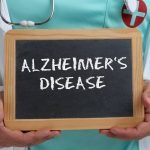If Ponce DeLeon had succeeded in finding the Fountain of Youth, he might have discovered that the magical liquid inside was not healing water after all, but blood. And not just any blood would have sufficed — only the blood of explorers younger than himself. Vampirish though it sounds, researchers have found that young blood rejuvenates old bodies. Now, new evidence suggests that young blood may also make the brain young again.1
The discovery came to light through dissertation work by Stanford PhD student Saul Villeda, who apparently introduced his doctoral presentation with a slide that said, “Friends don’t let friends drink friends.” (Yes, I know, that sounds like geek humor from the Big Bang Theory, but there you have it.) Villeda and his mentor, Dr. Tony Wyss-Coray, also of Stanford, were inspired by earlier studies finding that young blood — meaning the blood of young individuals — stimulates the growth of liver and muscle tissue far more effectively than old blood does. They hypothesized that young blood might do the same trick for the brain, since the brain has so many blood vessels running through it.2
And so, they volunteered some mice of varying ages — three-month old mice and two-year-old mice, which is ancient by mouse standards. First the researchers compared the brains of the young and old mice. They confirmed that sure enough, the old mouse brains generated far fewer new nerve cells in the hippocampus, which is the part of the brain associated with memory, compared to the brains of young mice. The process by which the brain creates new nerve cells is called neurogenesis. The more new nerve cells, the better the memory and cognitive functioning. Then, the scientists actually made the mice into Siamese twins, conjoining the circulatory systems of old mice with those of young mice so that the mice could trade blood. All very Transylvanian.
After exposure to the young blood, the old mice experienced a rapid boost in their ability to create new brain cells in the hippocampus, increasing from under 400 cells to nearly 1,000. Plus, they performed better in learning and memory tests. “We saw a threefold increase in the number of new nerve cells being generated in old mice exposed to this ‘younger’ environment,” says Wyss-Coray. Likewise, the young mice had a decrease in new brain cells after being joined to their older compatriots.
Does this indicate that if you want to recover your youthful acuity, you need to suck the blood out of innocent children or get your head conjoined to a young scalp? No — there is another way. The key rests in the further research the investigators did to discover why the young blood made such a difference. They found 17 chemicals that increase in the blood with age. These blood components all play a role in promoting inflammation.
For instance, one of the biochemicals, known as Eotaxin, works to bolster the immune system in cases of allergic reaction by attracting immune cells, but if these extra cells linger, inflammation results. Obviously, an older person would have a longer lifetime of allergic exposure compared to a younger one, and therefore, would typically have more Eotaxin in the system. When the researchers isolated Eotaxin and injected it into young mouse brains, the chemical slowed down neurogenesis. Likewise, blocking Eotaxin with antibodies in old mice promoted neurogenesis. The mice who got Eotaxin performed worse on spatial-memory tests and vice versa.
The bottom line is that systemic inflammation seems to be one of the major factors preventing the brain from staying limber. While the inflammatory response works to help us recover from injuries or allergies when we are young, apparently as we age, the system doesn’t bounce back and we get “stuck” in inflammation. According to Dr. Theo Palmer, who researched the impact of yet another inflammatory blood chemical that increases with age, “I think it’s probably a safe speculation to say that inflammation-producing injuries or disorders may reduce new nerve-cell formation or even accelerate aging.”
If inflammation plays a big role in the decline of cognitive function and promotes aging of the brain, there are things you can do right now to reduce that inflammation. Exercise is a great place to start. Studies show that exercise may reduce systemic inflammation by about half.3 You also might want to take a really, really serious look at a good proteolytic enzyme formula. One of the key benefits of a good formula is that it reduces systemic inflammation through multiple pathways. How cool is that?
Meanwhile, the research team at Stanford is continuing its investigation, hoping to not only identify more blood factors that inhibit the creation of new cells but also to identify chemicals in the blood that stimulate cell growth. Rumor has it that sometime in the future, doctors will prescribe an antidote to the aging brain–the fountain of youth in a capsule. In the meantime, if any of you are thinking of going the vampire route, I recommend against it. Although it might keep you young for a while, it usually doesn’t turn out that well in the end.
1 Goldman, Bruce. “Old Brain, New Tricks.” Fall 2011. Stanford Medicine. 22 December 2011. <http://stanmed.stanford.edu/2011fall/article9.html>
2 Szalavitz, Maia. “Injecting Young Blood Rejuvenates Old Brain.” 21 December 2011. Time Healthland. 22 December 2011. <http://healthland.time.com/2011/12/21/study-injecting-young-blood-rejuvenates-old-brains/?iid=hl-article-mostpop1>
3 Ford, ES. “Does exercise reduce inflammation? Physical activity and C-reactive protein among U.S. adults.” 13 September 2002. Epidemiology. 22 December 2011. <http://www.ncbi.nlm.nih.gov/pubmed/12192226>











